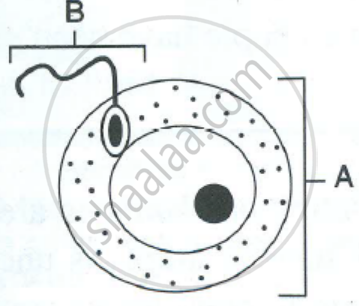Advertisements
Advertisements
प्रश्न
Newly formed DNA copies may not be identical at times. Give one reason.
उत्तर
During the process of replication of DNA, most of the base sequences in the new copies are identical to those in the parent DNA. However, some changes can occur either due to mutations or due to minor errors during replication process. Thus, the newly formed DNA copies may not be identical at times.
APPEARS IN
संबंधित प्रश्न
Suggest three contraceptive methods to control the size of human population, which is essential for the health and prosperity of a country. State the basic principle involved in each.
Which part of the human body produces ova?
What do the ovaries in a woman produce?
During adolescence, several changes occur in the human body. Mark one change from the following associated with sexual maturation in boys.
When a female child is born, her ovaries already contain thousands of immature eggs (or ova) contained in immature structures A. On maturing, A bursts open and an egg shoots out of the ovary in a process called B. The process B starts in the females at puberty and occurs again and again after a time period x. Before every occurrence of process B, the inner lining of uterus becomes thick and soft with lots of blood vessels in it. When the egg cell gets fertilised by a sperm, then an event C occurs in the life of mature human female which lasts for time period y leading to the birth of baby. If, however, the egg cell released by the ovary does not get a sperm to fuse with, then the thick and soft inner lining of uterus breaks down and comes out of the female's body in an event called D. The occurrence of event D is controlled by chemical substances E.
(a) What are A?
(b) What is process B?
(c) What is the time period x?
(d) Name the event C.
(e) How much is the time period y?
(f) What is the name of process D?
(g) Name the chemical substances E.
The diagram below represents two reproductive cells A and B. Study the same and then answer the questions that follow:
 |
- Identify the reproductive cells A and B.
- Name the specific part of the reproductive system where the above cells are produced.
- Where in the female reproductive system do these cells unite?
- Name the main hormones secreted by the (1) ovary (2) testes.
- Name an accessory gland found in the male reproductive system and state the function of its secretion.
Mention, if the following statement is True or False. If false rewrite the wrong statement in its correct form:
A zygote is the product of the fusion of male and female gametes.
Cryptorchidism is a condition where ______.
The living organisms can be unexceptionally distinguished from the non-living things on the basis of their ability for ______.
Distinguish between Vasa efferentia and Vasa deferentia.
